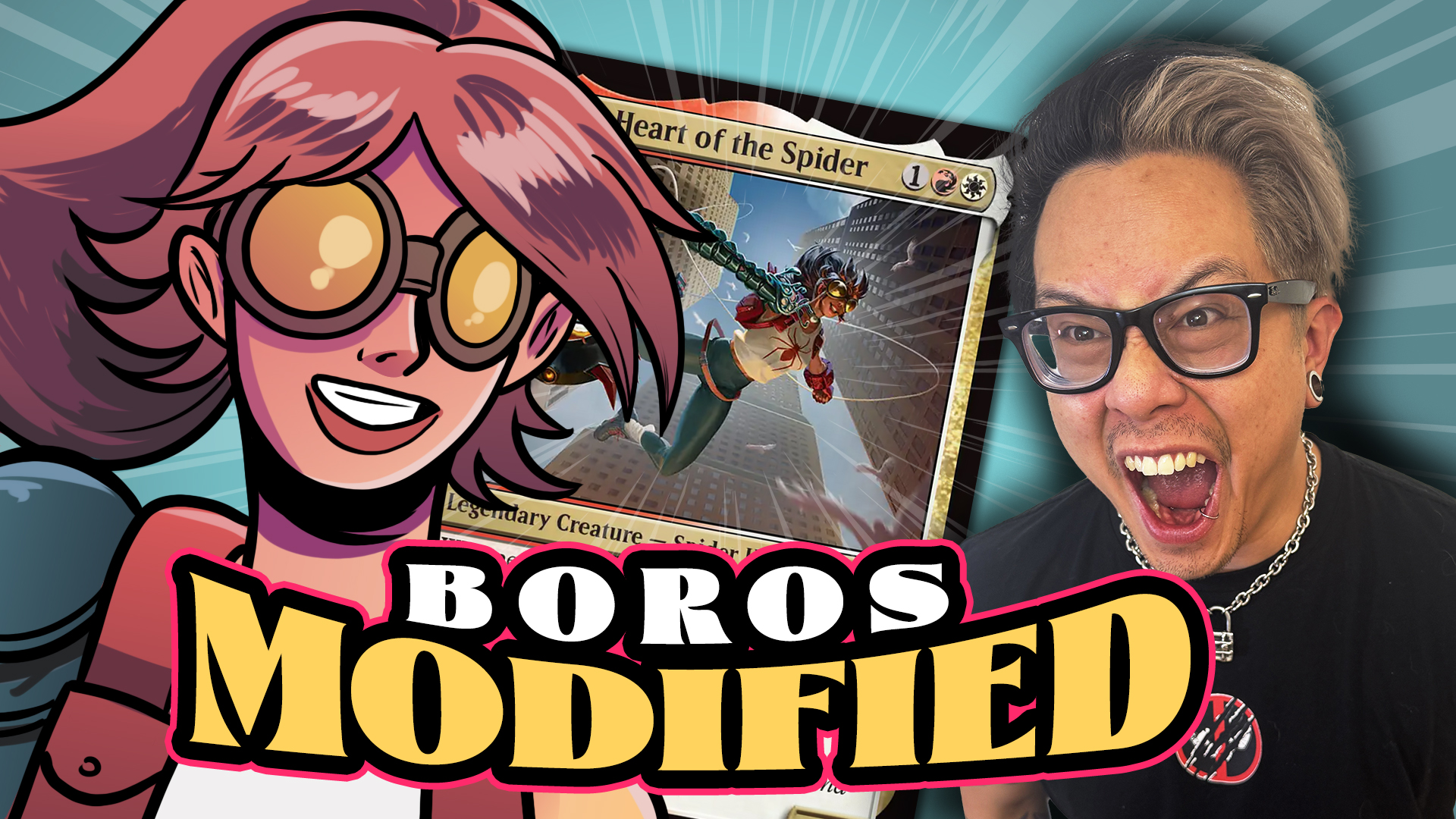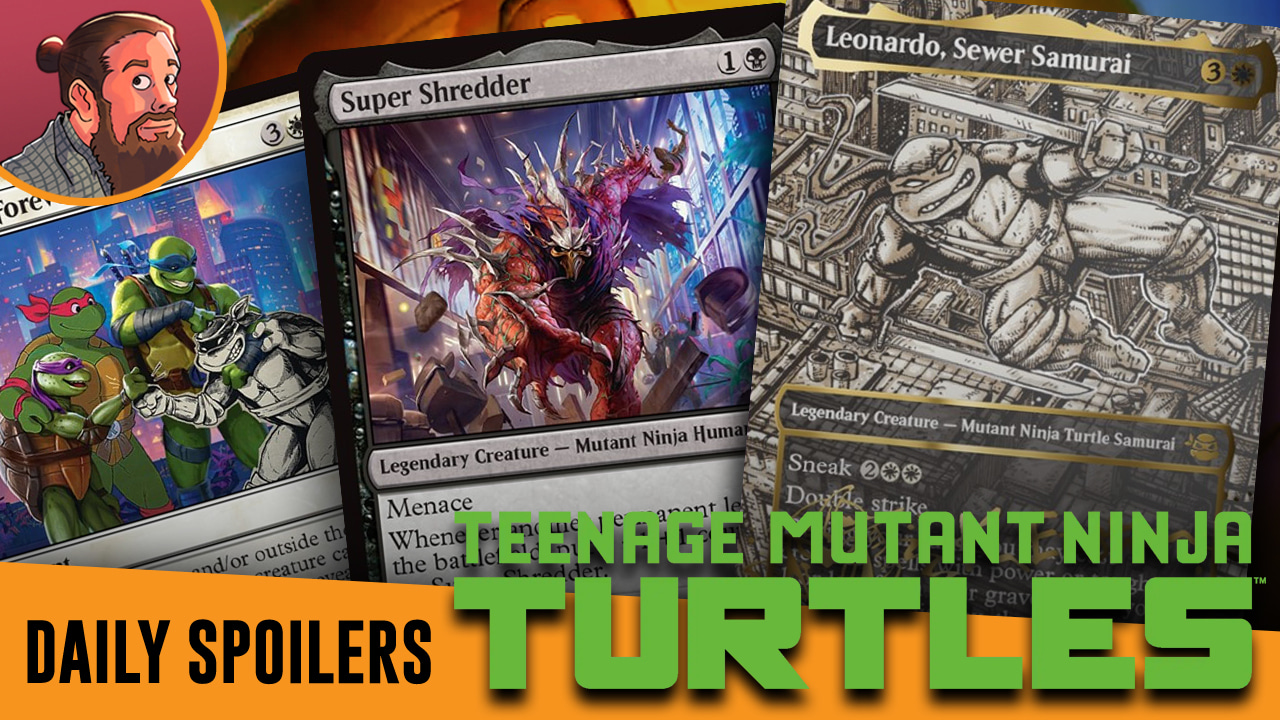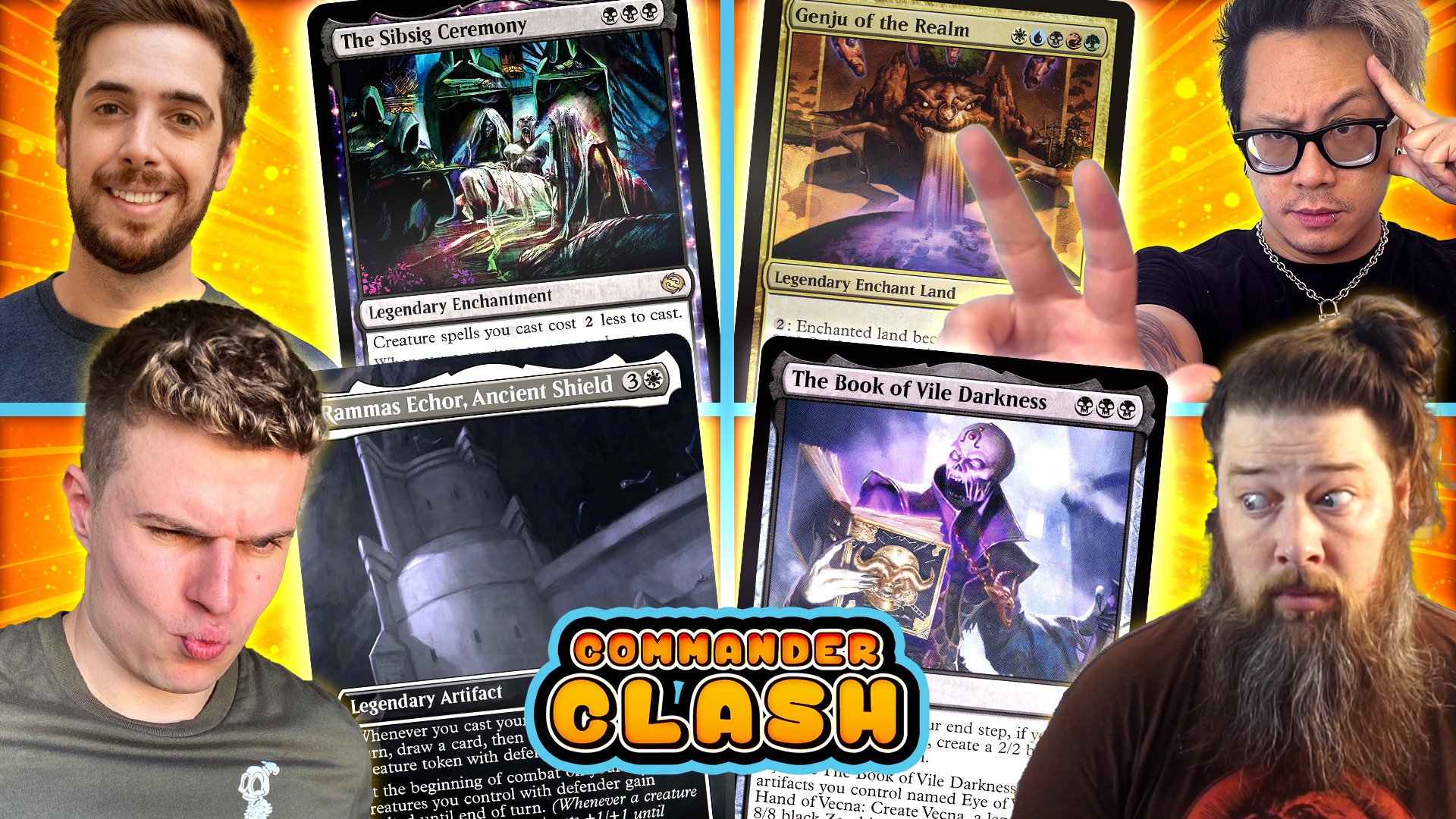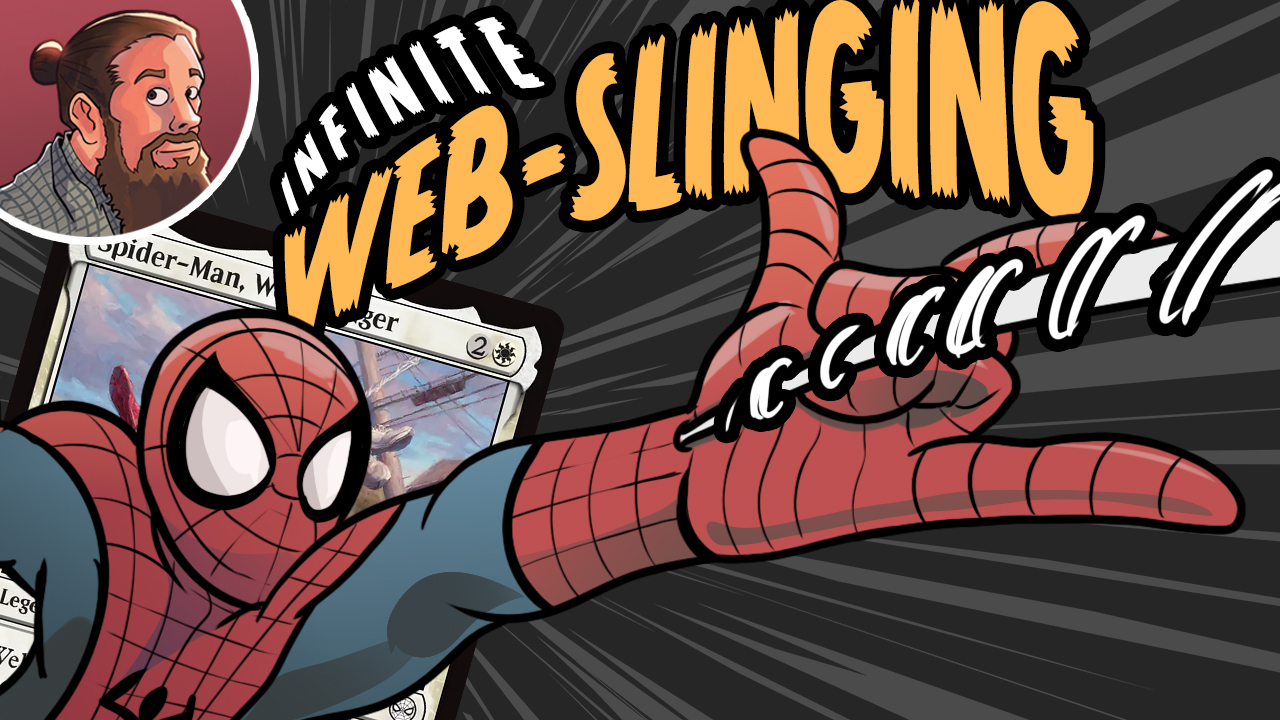2019 Challenger Decks: Ranking and Rating
While we knew that the 2019 edition of the Challenger Deck series was set to release in April with an MSRP of $29.99, until this week, we had no idea which decks would show up in the series or which cards would be featured. Finally, on Monday, Wizards gave us the deck lists. While they all have unique names, beneath everything else, the decks are essentially White Weenie, Mono-Red Aggro, Golgari Midrange, and Izzet Drakes.

The goal of the Challenger Deck series is a bit different from that of most supplemental products. Rather than being primarily about reprinting expensive cards, the Challenger Decks are designed to give players decks that are at least Friday Night Magic–playable right out of the box and, ideally, legitimate top-tier Standard decks after a handful of upgrades. From a purely financial perspective, all of the 2019 Challenger Decks are a good buy, with more value in cards than the $30 MSRP, so in some sense, you can't really go wrong picking up any (or all) of the deck in the series. However, not all of the Challenger Decks are created equal. So today, we're going to put the Challenger Decks through their paces and rank them based on five categories (covering value and playability) to try to figure out which is best. Before we get to the rankings, here are the lists along with short write-ups about where each deck comes from and what it is modeled after. Oh yeah, for the rest of the article, rather than referring to the 2019 Challenger Decks by their given names, we're going to call them by their archetypes. So rather than United Assault (for example), we'll go with White Weenie, which will hopefully be less confusing and make it so you won't have to jump back and forth trying to figure out which deck we're talking about.
The Decks

United Assault is basically a Mono-White Aggro / White Weenie deck. It's very similar to the deck that LSV (and a bunch of other really good players) ran at Pro Tour Ravnica Allegiance a few months ago. The basic idea of the deck is to swarm the board with cheap creatures, use Pride of Conquerors and Benalish Marshal to turn all of its small creatures into meaningful threats, and close out the game with a few huge attacks.

Lightning Aggro is Mono-Red Aggro, another deck that was extremely popular and powerful in Standard just a few months ago. The plan here starts off similarly to the White Weenie deck: get cheap creatures onto the battlefield as quickly as possible to start getting in damage. But in the late game, Mono-Red Aggro plays out much differently than White Weenie thanks to having a ton of burn spells, which allows it to close out the game without attacking. Meanwhile, the other "finisher" of the deck is Experimental Frenzy, which can generate absurd amounts of card advantage by allowing players to chain together spell after spell from the top of their deck.

Deadly Discovery is Golgari Midrange, a deck that was arguably the best deck in all of Standard before the release of Ravnica Allegiance. While the current builds of Golgari Midrange aren't often Golgari (instead splashing into blue for Hydroid Krasis and sideboard cards, thanks to the good mana provided by the rest of the shock lands from Ravnica Allegiance), the plan of Golgari Midrange is very similar: slowly grind out value until the opponent eventually can't keep up and eventually loses. The deck is overflowing with two-for-ones like Golgari Findbroker and Ravenous Chupacabra along with a bunch of potential two-for-ones in explore creatures like Jadelight Ranger and Merfolk Branchwalker. While Golgari Midrange isn't likely to win quickly, if you can survive the early game, it is the best of the Challenger Decks in terms of late-game value. It's also the closest thing we have to a control deck in the 2019 edition of the Challenger Decks (although considering it true control is probably a stretch).

Arcane Tempo is essentially an Izzet Spells deck modeled after Izzet Drakes in Standard. It sort of walks the line between a control deck and a weird sort of combo deck, with Goblin Electromancer allowing you to cast a ton of cheap spells in a single turn to make a bunch of tokens with Murmuring Mystic; deal a ton of damage (and draw a bunch of cards) with Niv-Mizzet, Parun; or grow a lethal, evasive Crackling Drake. While not as good at Golgari Midrange at playing the long game and not as fast as White Weenie or Mono-Red Aggro, Izzet Drakes makes up for this by being one of the most consistent decks of the series, with a bunch of cheap card-draw spells to back up its powerful finishers.
The Rankings
Best Current Value
| Rank | Deck | Price |
| #1 | Izzet Drakes | $117 |
| #2 | Mono-Red Aggro | $75 |
| #3 | Golgari Midrange | $70 |
| #4 | White Weenie | $60 |
This is a pretty easy category since it's extremely black and white: Izzet Drakes is the most valuable deck of the 2019 Challenger Deck series, and it isn't especially close. The other three decks fall between $60 and $75 dollars, while Izzet Drakes is worth a massive $117. How could it happen that one deck is worth so much more than the rest? The answer here is pretty simple: a few cards in the Izzet Drakes deck are significantly more expensive today than back when Wizards was designing the Challenger Decks a few months ago. Arclight Phoenix started off as a $5 card before growing steadily to $15, $20, and now $30 a copy; Chart a Course and Lava Coil have shot up from bulk uncommon prices to more than $10 a playset over the past few months; and Entrancing Melody went from $0.50 to nearly $5. It seems likely that back when Wizards was designing the Challenger Decks, they all contained roughly the same amount of value. But the price changes since have pushed Izzet Drakes far above the rest of the pack. As such, if you can find the Izzet deck for at or near MSRP, you should probably pick it up. Even if you don't especially want the deck itself, it's pretty much free money if you sell or trade away the pieces, considering that just the single Arclight Phoenix is worth as much as the entire deck costs all by itself.
Most Chase Cards



| Rank | Deck | Cards |
| #1 | Izzet Drakes | Arclight Phoenix (x1), Sulfur Falls (x3), Lava Coil (x4), Chart a Course (x4) |
| #2 | Golgari Midrange | Jadelight Ranger (x2), Vraska, Relic Seeker (x1), Overgrown Tomb (x1) |
| #3 | White Weenie | History of Benalia (x2), Legion's Landing (x2) |
| #4 | Mono-Red Aggro | Rekindling Phoenix (x1), Lava Coil (x2) |
While there isn't any generally agreed-upon definition of "chase" when it comes to Magic cards, for our purposes, a "chase card" is a rare or mythic that is worth more than $5 and an uncommon or common that is worth more than $2.50. Here, once again, Izzet comes out on top, not only having the highest number of chase cards but the single most valuable cards in the set, with Arclight Phoenix being around $30 and Sulfur Falls being around $10 per copy. This being said, Golgari Midrange deserves mention as well because it narrowly misses having some more cards on the list thanks to our $5 and $2.50 cutoffs, with two copies of Woodland Cemetery (worth about $4.75 each) and four copies of Merfolk Branchwalker (about $1.75 each as an uncommon). As for the other two decks, it's unsurprising that they come in at the bottom of our ranking since they are mono-colored, which means unlike Golgari Midrange and Izzet Drakes, they don't have any rare lands to help increase their value and prop up the bottom line.
Best Long-Term Value



| Rank | Deck | Cards |
| #1 | Izzet Drakes | Arclight Phoenix (x1, survives rotation, Modern staple), Niv-Mizzet, Parun (x2, survives rotation), Sulfur Falls (x3, Modern staple), Lava Coil (x4, survives rotation) |
| #2 | Mono-Red Aggro | Runaway-Steam Kin (x4, survives rotation), Experimental Frenzy (x2, survives rotation), Banefire (x1, sees play in other formats), Lava Coil (x2, survives rotation) |
| #3 | Golgari Midrange | Overgrown Tomb (x1, survives rotation, Modern staple), Woodland Cemetery (x2, sees play in other formats) |
| #4 | White Weenie | Nothing of relevance |
In general, part of the reason why Wizards feels comfortable overloading Challenger Decks with value is that most of the chase cards will be rotating from Standard (and losing most of their value) in about six months. As such, Challenger Decks are a way for Wizards to cash in on these cards' equity one more time before they end up close to worthless, which in turn makes them unappealing to reprint in other supplemental products. That said, the 2019 Challenger Decks do have some cards that will maintain value even through the upcoming Standard rotation, either because they are new enough that they will survive rotation and remain in Standard for another year or because they see play in non-Standard formats like Modern.
Here, things break down into three groups. Once again, at the top of the pile (by a significant margin) is Izzet Drakes. The combination of true two Modern staples in Arclight Phoenix and Sulfur Falls is tough to beat. In fact, just these four cards (one Arclight Phoenix and three copies of Sulfur Falls) are worth about twice the deck's $30 MSRP. Plus, as a bonus, you get Niv-Mizzet, Parun, which will stick around Standard for another year as a control finisher, and a full playset of Lava Coil, which should remain an important removal spell for Standard even after rotation.



The second group contains Golgari Midrange and Mono-Red Aggro, which offer a similar amount of long-term value but in different ways. Golgari Midrange gives you an Overgrown Tomb, the best Modern card from the entire 2019 Challenger Deck series outside of Arclight Phoenix, and a couple of Woodland Cemetery, which are great for Commander and show up in Modern occasionally. Meanwhile, Mono-Red Aggro doesn't have as much in terms of Modern potential (although Banefire shows up in some fringe decks) but offers some of the best non-rotating Standard cards from the series, with Runaway Steam-Kin being a Mono-Red staple and Experimental Frenzy likely to remain a part of the format even after rotation.


Finally, the third group has White Weenie, which offers pretty much nothing as far as long-term value. While Legion's Landing could theoretically find a home in Modern eventually, it hasn't really caught on yet, and History of Benalia, while devastatingly powerful in Standard, is pretty slow for non-rotating formats. As such, whatever value you do get from the White Weenie deck is more short term, since all of its valuable cards are likely to crash hard when they rotate from Standard.
Most Playable out of the Box



| Rank | Deck |
| #1 | Mono-Red Aggro |
| #2 | White Weenie |
| #3 | Izzet Drakes |
| #4 | Golgari Midrange |
Here, rather than going subjective and ranking the decks that I'd personally want to play most right out of the box, the idea is to rank decks based on how close they are to the top-tier versions of the decks without any upgrades at all. In this category, Mono-Red Aggro is a clear winner. Just compare the Challenger Deck list to this recent Magic Online tournament list. Right out of the box, Mono-Red Aggro is just a handful of spells (Risk Factor, Skewer the Critics, and Light up the Stage) from being the optimal, competitive version of Mono-Red.


Meanwhile, White Weenie is tricky to rate. On one hand, it does have pretty much all of the staples you'd want to play in the optimal White Weenie list. On the other hand, no one really plays straight White Weenie anymore, with pretty much all of the best performing lists being Azorius Weenie (splashing into blue for sideboard cards and Deputy of Detention) or Boros Weenie (for Heroic Reinforcements and Experimental Frenzy). While the Challenger Deck list looks a lot like the optimal White Weenie list from pre-Ravnica Allegiance Standard, I'm not sure how the deck will fare without the blue splash in a world of Wilderness Reclamation and Kaya's Wrath.

As for Izzet Drakes, the big problem here is that the deck is sort of walking the line between two different decks: Izzet Phoenix and Izzet Drakes. Normally, the Izzet Drakes builds have Enigma Drake to go along with Crackling Drake and are less likely to play Goblin Electromancer, while the Izzet Phoenix builds look a lot like the Challenger Deck but need four copies of Arclight Phoenix to really function. While the deck should still be powerful enough to win a lot of games right out of the box, the somewhat scattered nature of its finishers could be a problem.
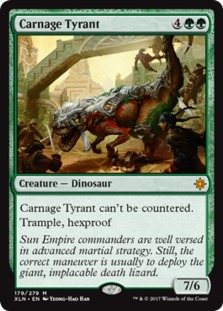


Finally, at the bottom of our list is Golgari Midrange, which mostly feels dated. Even discounting the fact that everyone plays Sultai rather than Golgari these days, the deck is missing copies of some very important cards. The best thing Golgari Midrange can do is play Wildgrowth Walker on Turn 2 into Jadelight Ranger on Turn 3, which won't happen very often with the Challenger Deck version thanks to having only two copies of Jadelight Ranger. This is not to mention the lack of Carnage Tyrant and Vraska's Contempt, which means the control matchup will probably be a nightmare. While a fully upgraded version of Golgari Midrange will give you one of the best decks in Standard in Sultai Midrange, out of the box, the deck will probably have some issues in our current meta. That said, none of the Challenger Decks are bad or unplayable out of the box, and while there are some problematic matchup,s I could still imagine Golgari Midrange winning a reasonable number of matches at an FNM-level event.
Easiest to Upgrade
| Rank | Deck |
| #1 | Mono-Red Aggro |
| #2 | Izzet Drakes |
| #3 | White Weenie |
| #4 | Golgari Midrange |

Upgrading to the top-tier version of Mono-Red Aggro from the Challenger Deck as a base is easy and also pretty cheap. In fact, you can use the $20 Rekindling Phoenix as trade bait (since the optimal version of the deck doesn't actually play it) to get enough money to fill our the rest of the main deck. You basically need just a handful of spells, like Risk Factor, Skewer the Critics, and Light up the Stage. Otherwise, all you need to do is move the Lava Coils and Banefire from the main deck to the sideboard, fill out the rest of the board with some random Horses (Lightning Mare and Diamond Mare), and you're good to go with the best version of Mono-Red in the format.


When it comes to upgrading Izzet Drakes, you basically have two pathways. One is to forget about Arclight Phoenix, cut Goblin Electromancer, add Enigma Drake, and play actual Izzet Drakes. The other is to go all-in on Arclight Phoenix, touch up the spells, and play Izzet Phoenix. Both upgrade paths are legitimate, although currently, Izzet Phoenix is much more popular in Standard than Izzet Drakes.
While both builds need Steam Vents to really be optimal (which is a pretty significant cost), apart from the mana base, which pathway you choose is mostly up to you. The upside of heading toward Izzet Drakes is that the upgrade is cheaper (even though you need more cards in an absolute sense), and you can use Arclight Phoenix as trade bait for the upgrades. On the other hand, heading toward Izzet Phoenix takes fewer cards and gives you a higher-tier Standard deck in the end, but you need three more copies of Arclight Phoenix, which will set you back around $90.
My preferred plan for upgrading the Izzet deck is to try to buy multiple copies of the deck itself. If you can get four copies for near MSRP, you will have all four Arclight Phoenixs and—outside of Steam Vents and a couple of copies of Ral, Izzet Viceroy—pretty much all of the other cards you need to play the optimal build of Izzet Phoenix. Plus, you're going to end up with 12 Sulfur Falls, 16 Chart a Course and Lava Coil, and some extra copies of Niv-Mizzet, Parun, which you can trade away or sell to recoup some value.

The problem with upgrading the White Weenie Challenger Deck is that no one really plays Mono-White Aggro anymore, with pretty much all players heading toward Azorius Aggro or, in rarer cases, Boros Aggro. While heading toward Azorius Aggro might be appealing, the sad truth is that the Challenger Deck doesn't actually share that many cards with the deck. To get from the Challenger Deck to tier Azorius Aggro, you will need a set of Hallowed Fountains and Glacial Fortresses along with two more History of Benalia and Legion's Landing plus Tithe Taker and a bunch of commons and uncommons, since Azorius Aggro doesn't typically play the lifegain package of Ajani's Pridemate, Healer's Hawk, and Leonin Vanguard. This means it's actually pretty expensive to turn the Challenger Deck into Azorius Aggro. If that's the deck you want to play, it's still worth it to pick up the Challenger Deck (actually, two copies) to get a discount on your Legion's Landings and History of Benalias. But you're still going to need a significant number of cards to end up with the optimal deck.



On the other hand, heading toward Boros Aggro comes with an upside and a downside. The upside is that Boros Aggro does often play the lifegain package, so the creatures you get in the Challenger Deck will provide most of what you need to play the deck. While you will still need two more History of Benalia and Legion's Landing (again, this can be solved by getting two copies of the deck to end up with a playset), a much higher number of the cards from your Challenger Deck are useful. Meanwhile, the downside is that Boros Aggro isn't nearly as heavily played as Azorius Aggro (having blue sideboard cards like Negate really helps shore up the matchup against Nexus of Fate / Wilderness Reclamation decks, along with Esper Control), and you'll still need to invest in Sacred Foundry and Clifftop Retreat, which aren't cheap.


Here, the best plan is basically to use the White Weenie Challenger Deck as a way to pick up cheap copies of two of the most expensive cards in Azorius and Boros Aggro—History of Benalia and Legion's Landing—and then base your upgrade on what you happen to have in your collection. All things equal, Azorius Aggro is a more competitive option, especially if you already have Hallowed Fountain and Glacial Fortress, but Boros Aggro can work as well if you have red-white mana instead.

The only good news about upgrading Golgari Midrange is that, once you are done, you will end up with one of the best and most played decks in Standard: Sultai Midrange. That said, if you want to play Sultai Midrange, I'm not even sure that buying the Golgari Midrange Challenger Deck is worth it since you're still going to need $400 of cards to end up with the optimal build of the deck. Along with 11 shock lands and a bunch more check lands, you'll need a playset of Hydroid Krasis (which is nearly $120) along with several copies of Hostage Taker, Vivien Reid, Vraska's Contempt, and Carnage Tyrant. Throw all these cards together, and the cards you get in the Challenger Deck are basically a drop in the bucket. Basically, if you want Sultai Midrange, ignore the Challenger Deck. While you do get two Jadelight Rangers, four Merfolk Branchwalkers, two Find // Finality, and three rare lands, all together, these cards only add up to $38, and the price should decline now that everyone knows that they are being reprinted, potentially making it so these cards aren't even worth $30 by the time the Challenger Decks are released. The Golgari Midrange deck is fine for kitchen table play, but it's severely lacking in terms of upgrade potential.
Final Rankings and Thoughts
We ranked each Challenger Deck in five categories based on value and game play. A first-place finish in a category is worth 4 points, scaling down to 1 point for a last-place finish. This means the maximum number of points a deck can earn is 20 (which would be first place in every category), while the minimum is 4 points (last place in every category). Here's where the decks finished:
Izzet Drakes: 16 points
Mono-Red Aggro: 15 points
Golgari Midrange / White Weenie: 9 points
The 2019 Challenger Decks break down into two clean groups. While Izzet Drakes edges out Mono-Red Aggro for first place by a single point (mostly by crushing it in the value-based categories), we basically have two strong Challenger Decks in Izzet Drakes and Mono-Red Aggro and two weak Challenger Decks tied for last place in Golgari Midrange and White Weenie. Of course, it's important to restate something from the intro: all of the Challenger Decks are worth their $30 MSRP, so it's not so much that you shouldn't be Golgari Midrange or White Weenie. But if you are trying to figure out which Challenger Deck to buy and you're having a hard time picking between the decks, this ranking should make for a good tiebreaker. Let's wrap up today with some final advice on each deck.
- Izzet Drakes: This deck is basically a snap buy if you can find it for at or near MSRP based on value alone. Even if you have no interest in playing the deck, thanks to its three Sulfur Falls, one Arclight Phoenix, and bunches of chase uncommons, you should be able to buy this deck for $30 and immediately sell or trade away the pieces for a profit. If you want the deck for game play, consider picking up multiple copies, if possible, to get more copies of Arclight Phoenix. You can then sell or trade away your extras to finish off your upgrades or to recoup most of the money you spend on your decks. The Izzet Drakes deck has so much value that if you are a Modern player, it actually makes sense to buy the deck just for the Arclight Phoenix.
- Mono-Red Aggro: This is the best deck for Standard players. It upgrades cheaply into a deck that has ranged from best in the format to second tier over the past year or so. And because many of the key cards survive rotation this fall (Risk Factor, Runaway Steam-Kin, Experimental Frenzy, and Skewer the Critics), it's likely that your Mono-Red Aggro deck will remain playable for a year and a half, rather than just six months.
- White Weenie: The White Weenie deck is good for basically one thing: picking up cheap copies of History of Benalia and Legion's Landing. While being Mono-White was fine back before the release of Ravnica Allegiance, the format is currently pretty hostile to the strategy thanks to the increasing power of Esper Control, with the printing of Kaya's Wrath, and the printing of Wilderness Reclamation speeding up Nexus of Fate strategies enough that they can race builds of White Weenie that don't splash into blue for counterspells. While you can upgrade the deck into a legitimate top-tier strategy in Azorius Aggro, the cost is high, since you will need a brand new mana base to support the blue splash.
- Golgari Midrange: While technically White Weenie and Golgari Midrange are tied for last in our rankings, I'd personally rank Golgari Midrange behind White Weenie since it's similar (in that the optimal version needs to splash blue to compete in the current metagame). But the upgrade is way, way more expensive since you need a three-color mana base, as opposed to a two-color mana base, and some of the standalone cards from Sultai Midrange are extremely expensive. Combine this with the fact that Golgari Midrange doesn't have much long-term value (with the explore creatures propping up the price likely to crash as they rotate from Standard in a few months), and it's really hard to figure out who should buy this deck. The value isn't great, the playability out of the box isn't great, and the long-term value isn't great, which might just mean that the Golgari Midrange Challenger Deck isn't a great option for most players.
Conclusion
Anyway, that's all for today. What do you think of the 2019 Challenger Decks? Do you agree with these rankings? Disagree? Which decks are you planning to buy? Let me know in the comments! As always, leave your thoughts, ideas, opinions and, suggestions in the comments, and you can reach me on Twitter @SaffronOlive or at SaffronOlive@MTGGoldfish.com.


